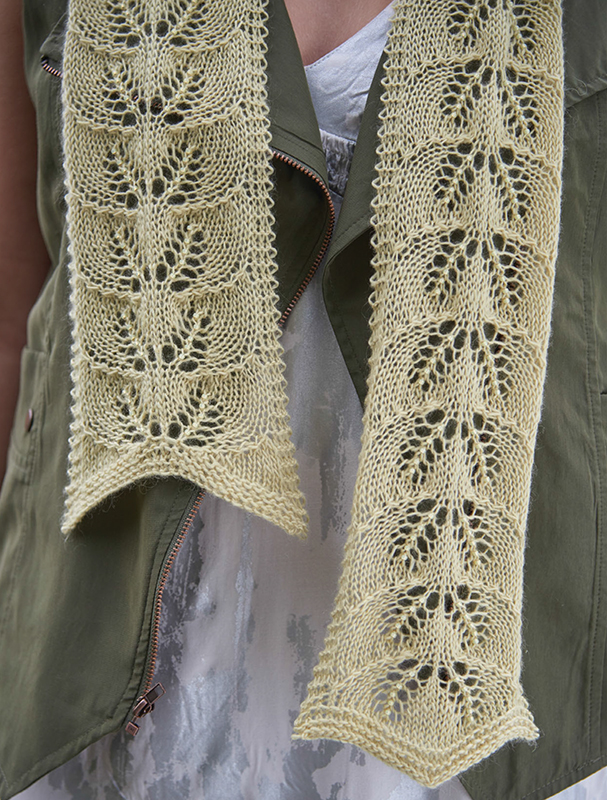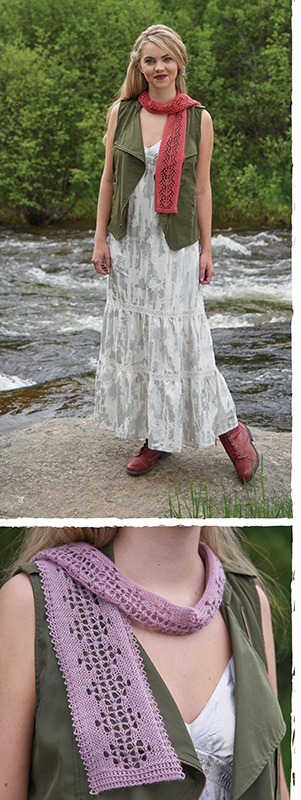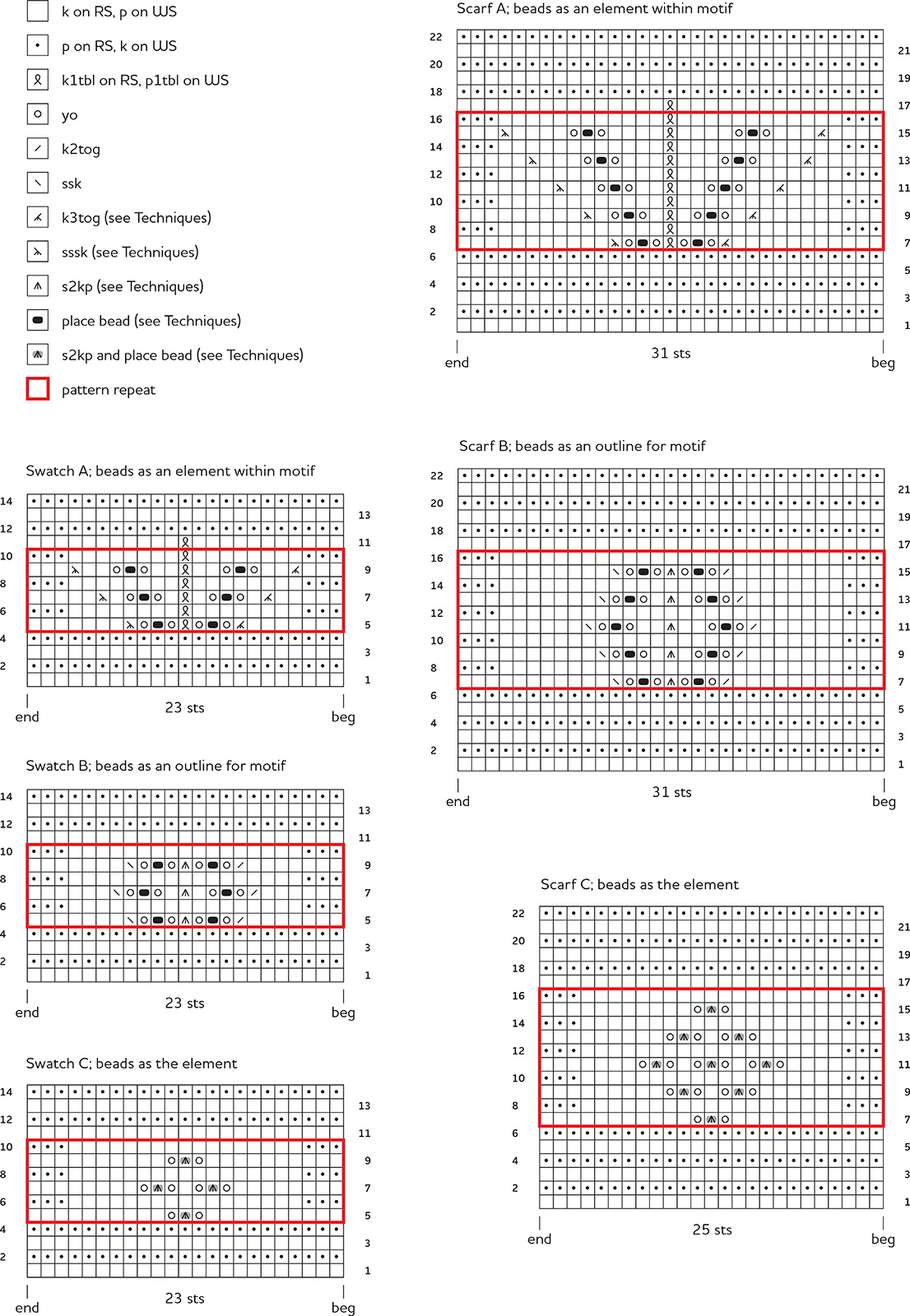
Breakneck Ridge is a 2.8-mile (4.5 km) hike in Hudson Highlands State Park, New York. Although it is not a long hike, it requires both your hands and feet to get to the top. Some sections require just a little rock climbing; wear decent hiking shoes. The vistas are totally worth the effort. There are amazing views all along the climb, many across the Hudson River, including a view to Storm King Mountain. Climb early in the morning and enjoy a picnic breakfast while you watch the hawks soar. Sit and knit a little.
These scarves use repeating lace motifs to illustrate how beads can be used for differing effects in your lace knitting. They are great for practicing adding beads and working basic lace techniques, along with gaining comfort using charts. Feel free to use one type of bead, or try as many as you like and call it a bead sampler! Use the Beaded Swatch charts for more diminutive versions of these scarves.

Version A (yellow)
41⁄4" (11 cm) wide and 49" (124.5 cm) long.
Version B (coral)
41⁄2" (11.5 cm) wide and 49" (124.5 cm) long.
Version C (mauve)
5" (12.5 cm) wide and 471⁄2" (120.5 cm) long.
Laceweight (#0 Lace).
Shown here: Quince & Co. Piper (50% Texas superfine merino, 50% Texas super kid mohair; 305 yd [279 m]/50 g): #606 Amarillo (yellow, A), #607 Caracara (orange, B), and #608 Odessa (mauve, C). 1 skein of each will make a scarf, with enough left for bead samplers.
Size U.S. 4 (3.5 mm): straight. Adjust needle size if necessary to obtain the correct gauge.
20 g Miyuki 8/0 Japanese seed beads in pale yellow/silver-lined alabaster for Version A; Miyuki 8/0 Japanese seed beads in salmon/silver-lined alabaster for Version B; Toho 8/0 Japanese seed beads in purple color-lined fuchsia AB for Version C; size U.S. 14 (0.6 mm) steel crochet hook, or size to fit beads; tapestry needle; stainless T-pins; blocking mats; 2 long and 2 short blocking wires.
About 24 sts and 30 rows = 4" (10 cm) over St st, blocked and relaxed. Gauge is not critical to this project, though the size of your scarf and amount of yarn used may be different from the pattern.

A word about slipping selvedge stitches: Don’t! This piece was designed to block freely and slipped selvedge stitches will create a less flexible edge.
Beads: See Techniques.
The number of stitches cast on are listed for each version in this order: A (B, C). For all other instructions, the numbers apply to all three versions.
Every row is charted. Charts are worked flat; read all right-side (odd-numbered) rows from right to left and all wrong-side (even-numbered) rows from left to right.
These scarves look like rags before blocking. There is something about fine mohair and lace knitting. So as with all lace, plan to block these scarves to really appreciate them.
CO 31 (31, 25) sts using long-tail method (see Techniques).
Beg desired chart and work Rows 1–16 once.
Rep Rows 7–16 twenty-eight more times. Note: For a longer scarf, rep Rows 7–16 additional times.
Work Rows 17–22 once.
BO row: K2, [return 2 sts just worked to left needle tip, k2tog tbl, k1] to last 2 sts, k2, return 2 sts just worked to left needle tip, k2tog tbl. Cut yarn leaving 9" (23 cm) tail, pull tail through rem st.
Weave in all ends but do not trim. Soak in cool water until fully saturated (about 30 minutes). Press to remove water, roll piece in a towel, and blot to remove extra water.
Weave a long blocking wire through the vertical strands in garter st along each long edge of scarf. Note: For Versions B and C you can weave a short wire along each short edge, and for Version A use T-pins to pull out the pattern’s natural scallop.
Pin wires to 51⁄2 (51⁄2, 5)" (14 [14, 12.5] cm) wide and 52" (132 cm) long. Allow to dry completely. Scarf will relax to finished measurements after unpinning. Trim ends.
